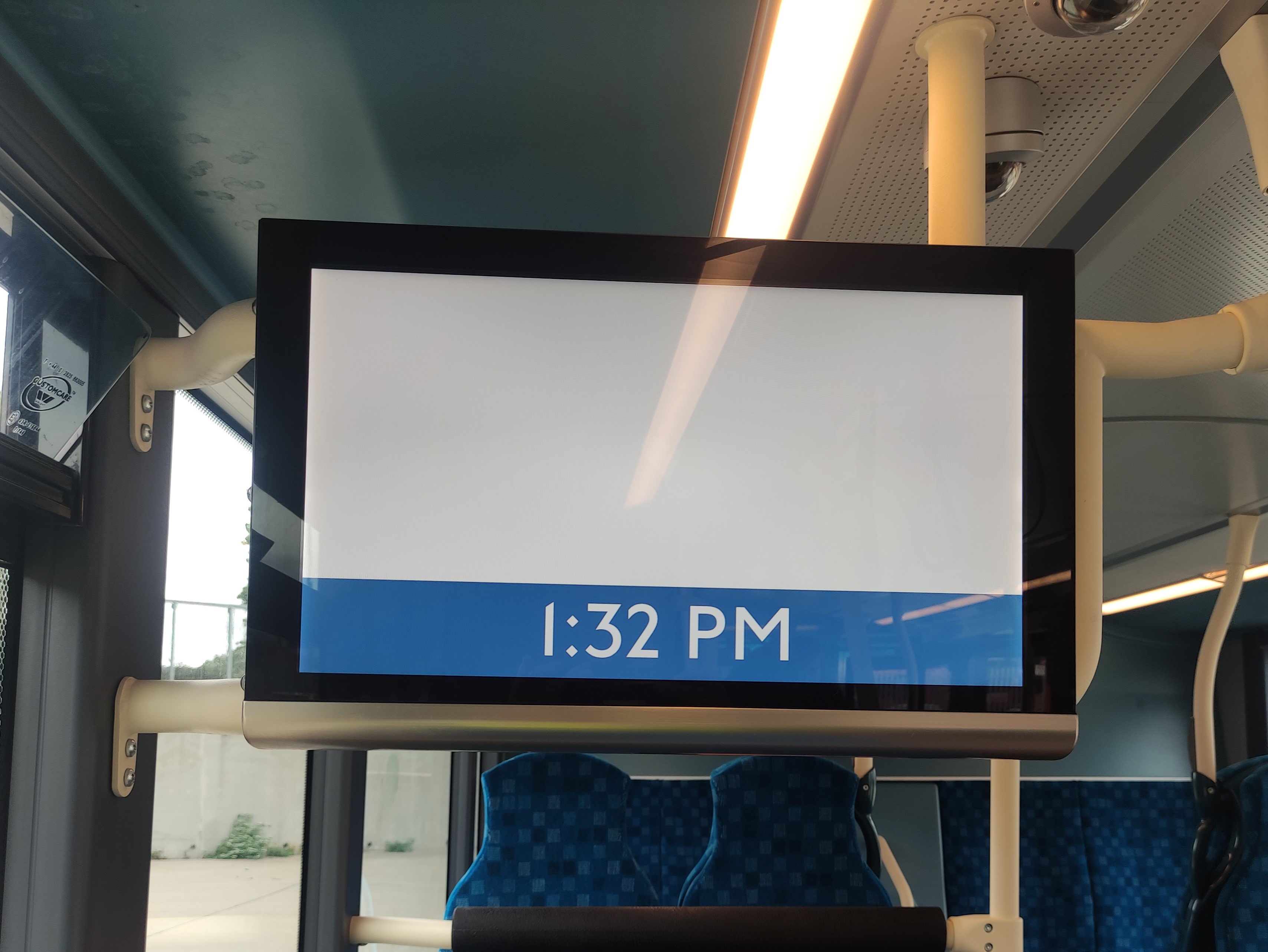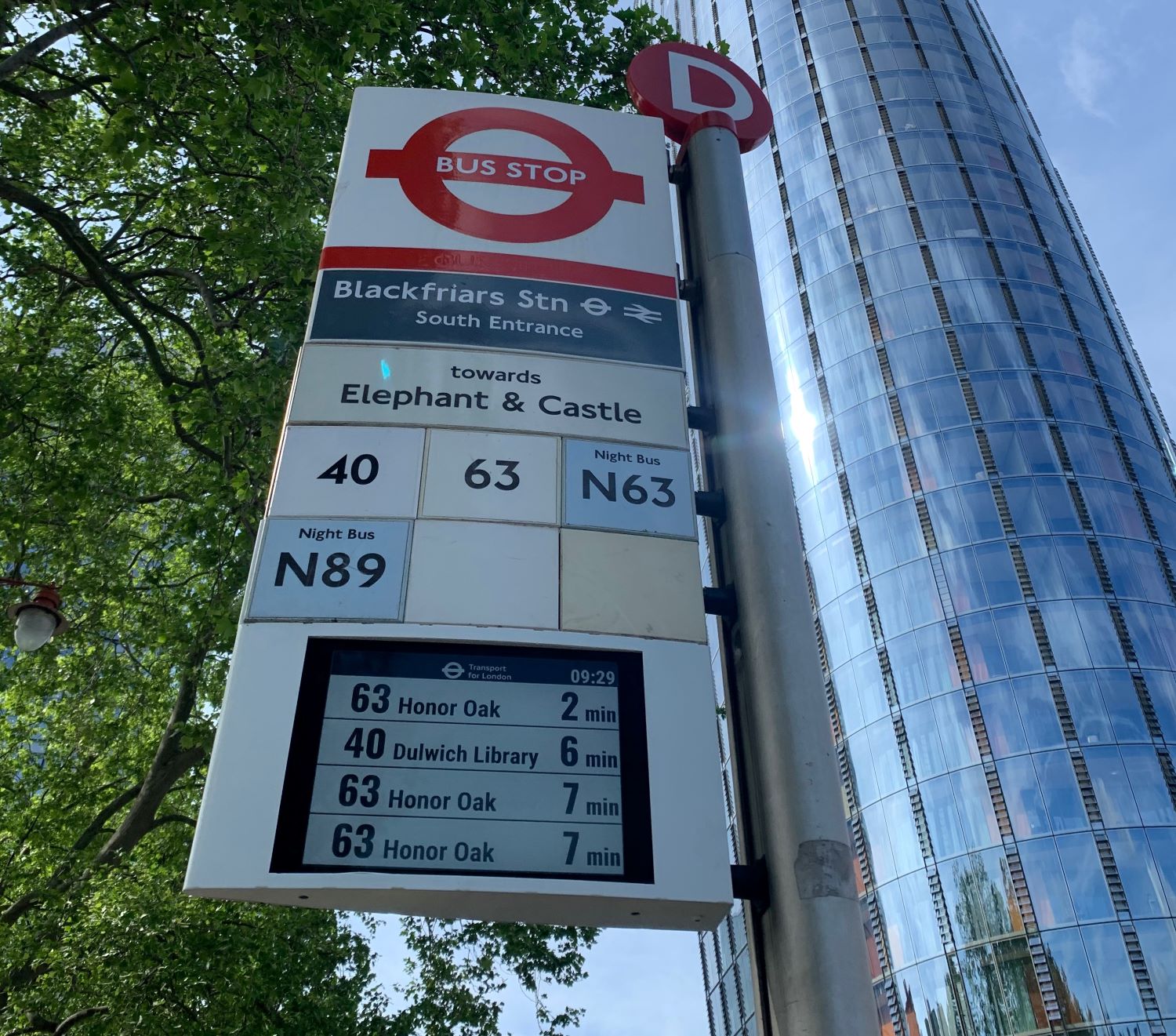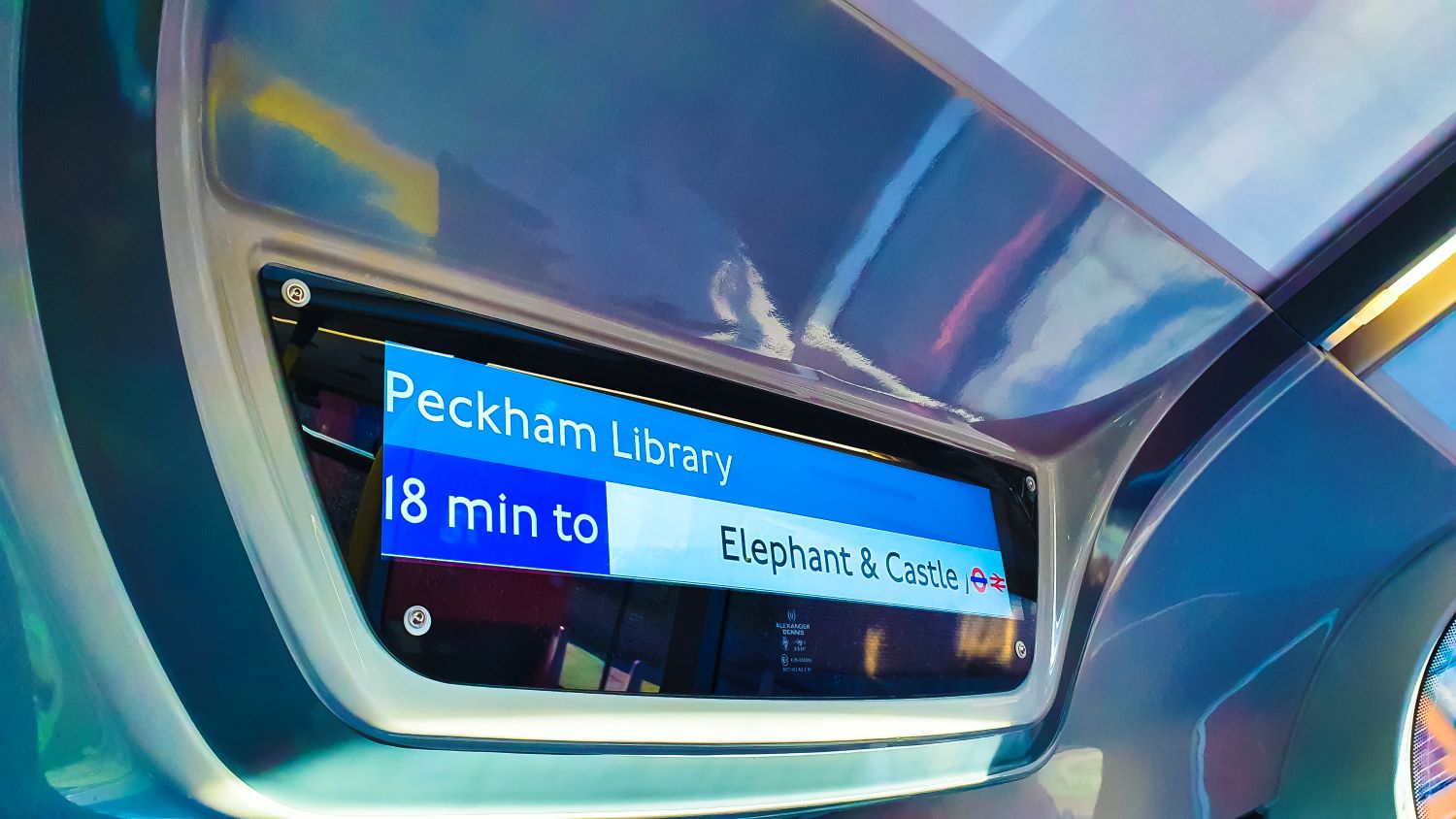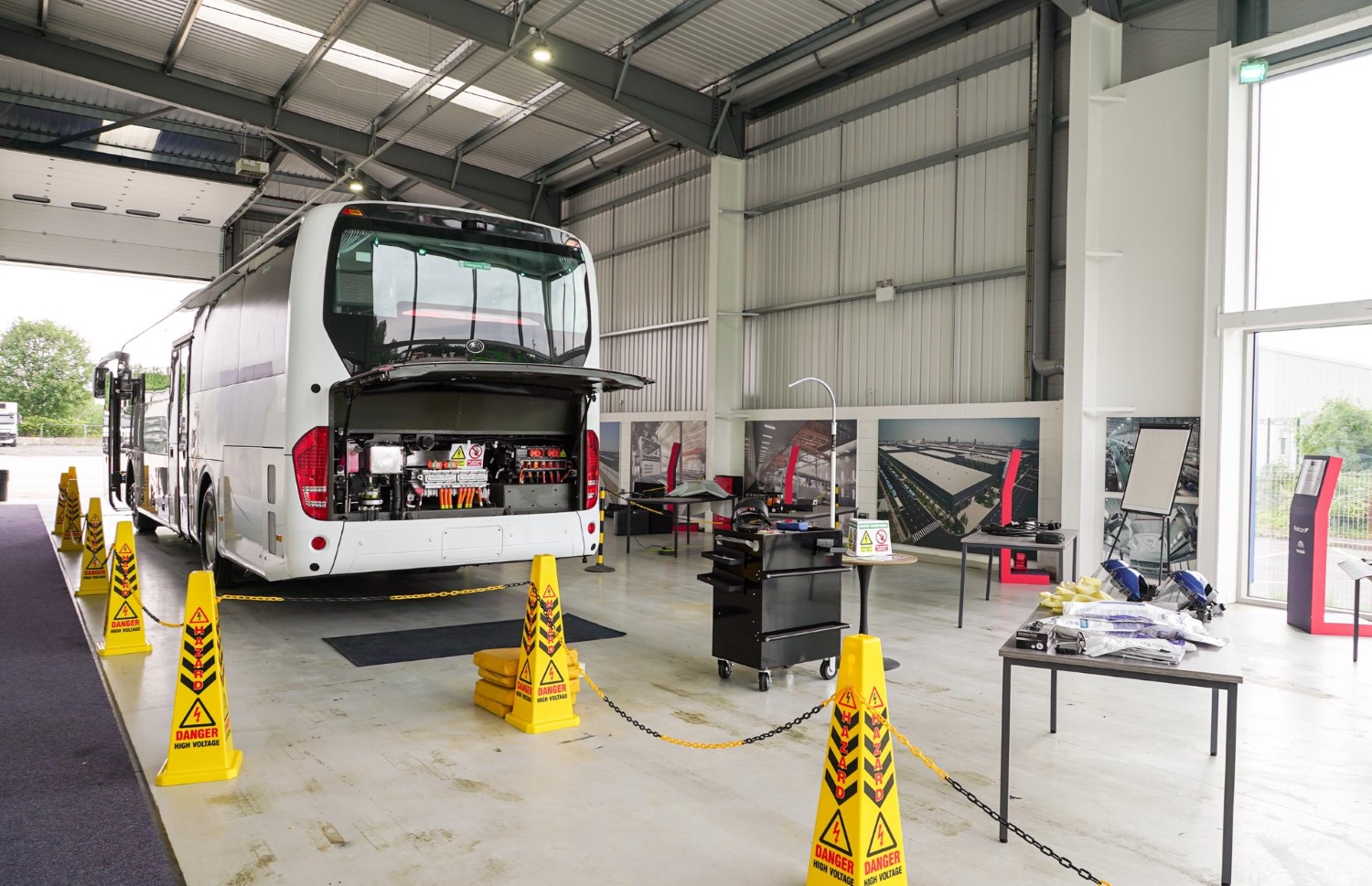Industry figures highlight the need for operators to act quickly to comply with government regulations on onboard announcements
Concerns have been expressed over government regulations around audible announcements and visual displays onboard buses which are due to come into force between 2024 and 2031.
Visual displays have been quite common for several years on some services. For example, DfT statistics published in 2022 reported that 98% of London buses had audio and visual information.
However, according to those DfT figures, only 25% of buses in England outside the capital carried audio and visual announcements and even many of those that currently have it may not yet be fully compliant with the new regulations.
Association of Local Bus Company Managers Chair Bill Hiron says his biggest fear concerning the regulations, which were announced in March, is that smaller operators may withdraw marginal services or pull out of operation altogether as a result.
The rules, which are designed to make buses more accessible, will apply in England, Wales and Scotland to almost all bus services — with “closed door” home-to-school, demand-responsive and non-local services among the exceptions.
The timeline for introduction will be graduated according to vehicle age, with newer vehicles which were first used to provide local services on or after 1st October 2019 having to comply from October 2024. A further deadline is set for 12 months later, while all older vehicles from 1973 onwards fall within scope by October 2026.
However, exemptions will be made for those which have “partially compliant” status on 1 October 2023. Operators will have until 2031 to make such vehicles fully compliant.
The regulations which will not need to be met in order to be partially compliant concern the requirement to give updates on diversions and notifications on hail-and-ride services, audible announcements including the need for induction loops and specifications around lines of sight and visibility of displays.
Budget concerns
The government is setting aside £4.65 million in funding for operators with 20 or fewer vehicles and details of how to apply may be published in the next few months. For those not eligible, Bill worries that the cost of refitting could be prohibitive.
“We know the audio-visual displays on their own, fitted, are probably £3,000 per bus depending on whether it’s single or double deck,” he says. “But by the time you add on the induction loops and the fitting, you could be looking at up to £10,000 a bus.
“That’s probably a worst case-scenario but, if that’s true, that £4.6 million does 460 buses, which isn’t a lot. To put it bluntly, in some cases, the cost of this kit is going to be more than the bus is worth.
“My fear is that that will lead to a huge swathe of withdrawals of rural and more marginal services and some operators will just give up.”
Bill, who is Managing Director of Stephensons of Essex, adds: “Lovely though the principle is, there is no business case for it. We’ve got roughly 130 buses, of which one has the kit already because it was delivered this year. To fit 129 buses could cost us just under £1.3 million.”
As well as the cost of ongoing maintenance, he points out the cost of refitting older vehicles with limited lifespans after the 2026 deadlines and that, although certain equipment could be reused in replacement buses, the cost of installation and some wiring would need to be met.

Challenging’ timescale ahead
Confederation of Passenger Transport (CPT) has been holding meetings with the Real-Time Information Group, which is the organisation working closely with DfT on the implementation of the regulations and which will administer the grant.
CPT has also been liaising with DfT since the consultation phase began in 2018. Keith McNally, CPT Operations Director, has been central to discussions and admits the timescale for meeting requirements may be “challenging”.
Major operator First Bus seems to agree. A spokesperson says: “First Bus welcomes plans to improve bus accessibility for all by mandating audio-visual information about routes, stops and diversions.
“Since DfT consulted on this in 2018, we have been waiting for a firm proposal for rollout and are therefore surprised by the speed at which this is now expected to be implemented. Work is under way internally to determine how we can best meet these requirements in a cost-effective manner.”
Keith adds: “On the one hand, everyone knew it was coming because of the consultation in 2018, so if you’ve been buying vehicles you should have been prepared really,” he says. “I guess it’s obvious that it’s going to be quite costly for operators. I think the concept of audio-visual information is good as long as it’s implemented correctly.
“On the plus side, if it transpires there are real challenges to get everything in place because the scale of retrofit is causing a supply issue, I think we’ve got the relationship with DfT to enable a discussion to try and shift some of the timelines.”
However, while he concedes some operators may want to wait for clarification on funding in the coming months, he adds: “The writing’s on the wall in that this is coming so operators need to look at trying to get that compliance in place.”
Highlighting the scale of the challenge, Keith says: “I would say there’s a very high proportion of systems that are currently in place that won’t meet the full specification. I think it’s fair to say that even the London system, which is obviously TfL-funded and most people would say it seems to work pretty well, I don’t believe that meets the full specification.
“Having said that, the difference might be the fitting of another screen, etc, so that’s relatively low cost compared to fitting a full system.”
Robert Williams, the Chief Executive Officer of Reading Buses, says his business has led the way when it comes to on-board audio and visual technology, but adds: “We are particularly concerned that what might be termed legacy systems, albeit very recently installed, may not be compliant with some of the more specific parts of the legislation.
“None of the systems currently on the market appear to provide absolutely everything that is required, and there is precious little time for them to be developed, installed and programmed. We feel very lucky to be ahead of the game in that respect.”
Manufacturers getting up to speed
Robert adds: “I also have a challenge to vehicle manufacturers to provide turnkey options. We need legally compliant standard screen sizes and connectors that our preferred system supplier can plug into, rather than having to remove and refit complex mounting systems and mouldings each time we want to buy or sell as bus.”
Two manufacturers responded to routeone on how well they are preparing for the regulations. Alexander Dennis tells us: “We have long been working with operators who have been fitting comprehensive audio-visual announcement systems in advance of this upcoming legislation and are aware of the legal requirements from 2026.
“We are constantly working with our customers in the operating industry to develop and implement solutions that best respond to their requirements and are actively considering how we can improve the modularity of audio-visual announcement systems.”
A Wrightbus spokesperson says: “We are aware of the legislation requirements for 2026 and are currently reviewing how best to incorporate this as we move forward.
“Many vehicles leaving our factory already have audio visual equipment and next-stop announcement screens which are viewable by wheelchair passengers and enhanced with audio.
“One of our recent orders included a high number of accessibility features such as two wheelchair bays, a pull-down pole for easier boarding, loop system and dementia-friendly flooring.”
The tech companies are ready
Vix Technology is among the companies likely to be benefiting from these regulations. The transport data solutions provider has worked with several operators, including supplying TfL with innovative, low-cost “E-paper” displays.
Product Director Sue Walnut believes meeting the 2026 deadline will be a challenge for some. She adds: “I’ve previously spent a number of years working at a bus operator and one of the biggest challenges I see for the industry is any requirements to retrofit. When you’re interfering with the fabric of a vehicle, it’s always a little bit of a pain but screens are less of a problem because there are usually ways you can handle the cabling.
“The bigger problem is retrofitting speakers. Putting them into the skin of the bus is not impossible but it’s typically an awful lot harder than just retrofitting a screen.”
Navaho is another leader in the field, having worked with TfL since 2014 and operators such as Go-Ahead and Abellio in other areas, and its product developers have long been aware of the plans for the regulations.
Business Relationship Manager Keith Elliott says: “We’ve been gearing up for it and we’ve noticed there has been an increase in the last year of bus manufacturers and operators wanting to know more about it.”
Keith McNally, meanwhile, concludes by stressing operators should not be hoping the deadlines are kicked further down the road much like Public Service Vehicle Accessibility Regulations. He says: “I think once the regulations are made and once the funding mechanism is clarified, I’d recommend everyone to get on with it and get everything in place. There aren’t any guarantees that any of the deadlines will be moved.”
Future tech to improve customer experience

While the new regulations may give operators anxiety, the future is exciting when it comes to onboard vehicle displays.
Vix Technology Product Director Sue Walnut believes one area of advancement could be making displays cheaper and thus more widespread.
She says: “The short-term focus is that people have got used to wanting television-like TFT displays but there’s always a drive to have something that’s lower cost. So there’s a lot of looking around to say, ‘how can we do something that’s rugged enough for the transit environment but at a price point that encourages operators to put more of these on their vehicles?’ There’s a real push to see how we can maintain quality but at a lower price point.”
For Navaho, which has favoured high-quality displays on, for example, London buses, the quality of information could be just as important in the future.
“We see ourselves pushing technology to give much clearer better displays on board,” says Paul Acketts, Navaho Business Development Manager. “Just showing what your next stop is doesn’t really cut it these days, people really expect more.” Interchange information and upper-deck occupancy are examples of possible future enhancements.
Sue sees artificial intelligence possibly playing a role when it comes the difficult aspect of informing passengers about route diversions.
Navaho Business Relationship Manager Keith Elliott highlights the role that “IT for PT” architecture is likely to play in standardising onboard technology in future. He explains: “It won’t matter who the supplier of the ticket machine is or the RTPI system or the passenger-counting system. They would all be talk to each other on a bus and that information can be exchanged in an almost plug-and-play way. That’s where we’re going with our systems.”
Navaho is also working on ways to engage travellers better with displays, for example the use of QR codes on screens to allow them to find greater detail on the journey via their phones.



























